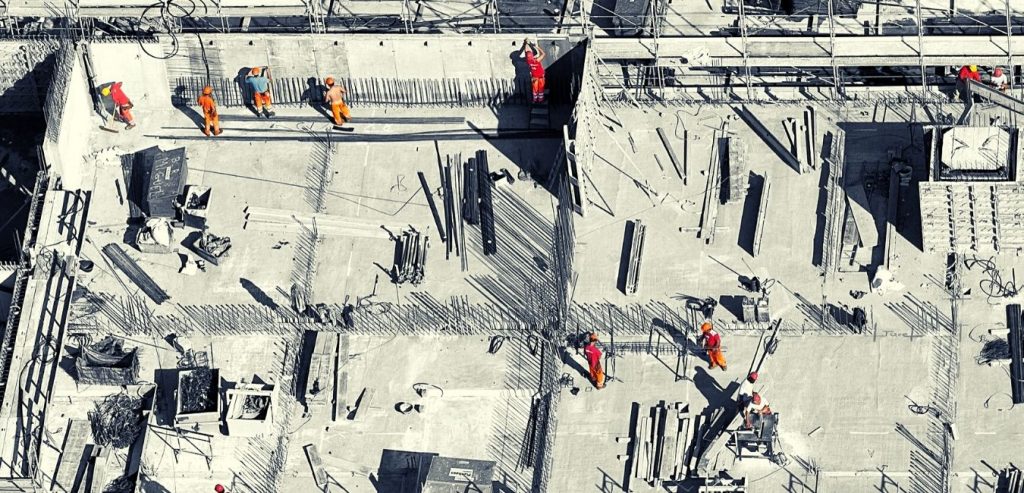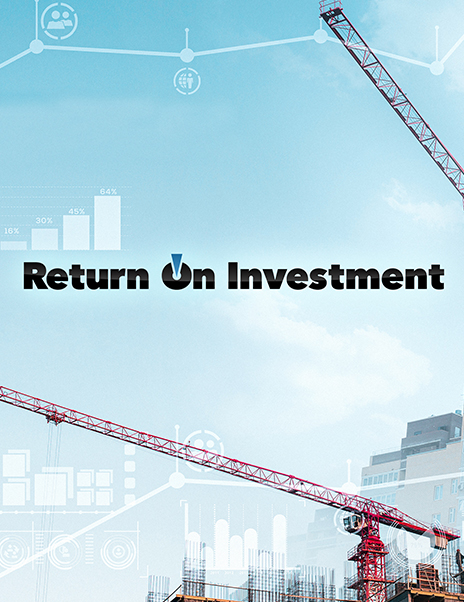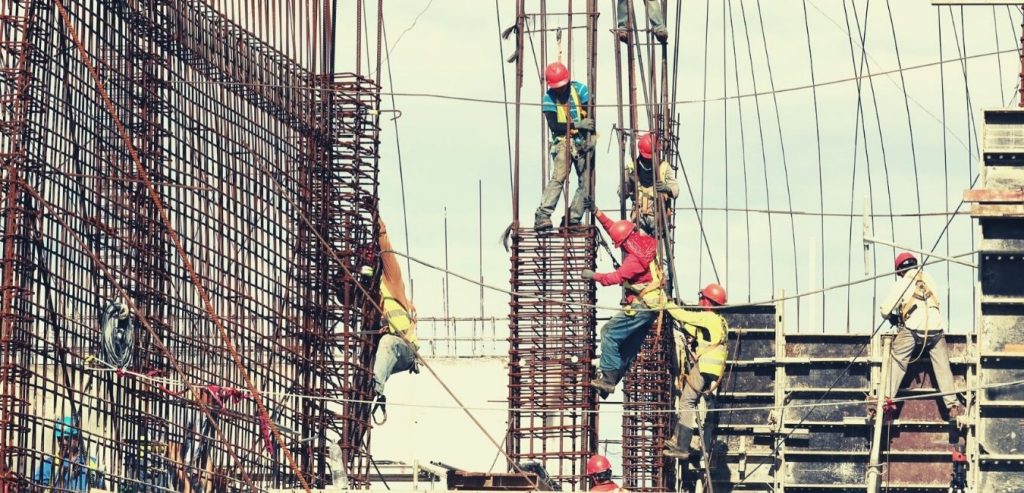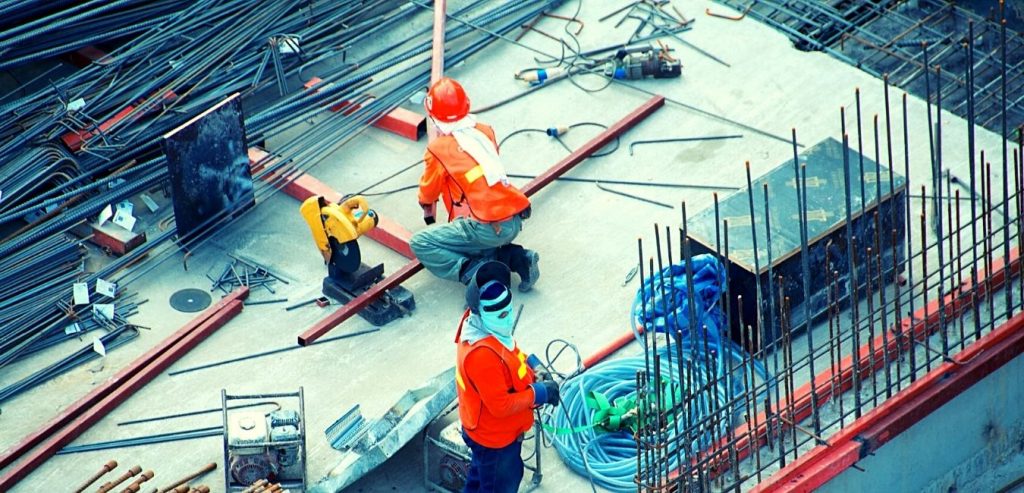Lean construction is a method of designing systems in construction to minimize effort, time, and material wastage. It ensures that a project is completed quickly and on budget. The use of lean construction maximizes value and reduces costs in any construction project.
In an industry where budgets, timeframes, and safety are critical, lean construction gives a better approach to construction than traditional methods. In addition, it is easier to attain repeatable and forecastable results using lean construction, and its usage is widely adopted in the construction industry.
Table of Contents
What does lean mean in construction?
In construction, the term ‘Lean’ refers to the combination of practical development and research to adopt principles in the construction process. It is concerned with the holistic approach and improvement of all dimensions in construction. Lean also refers to managing and improving the processes involved in construction by maximizing the value at minimal costs and considering the customer needs. It helps attain the sustainability objectives of a project.
What are the five principles of lean construction?
There is no single tool or method that helps achieve lean construction. However, there are principles in place to shift to lean thinking in construction. The Lean Enterprise Institute identified five fundamental principles of lean construction. These are:
- Value
- Value stream
- Flow
- Pull
- Continuous improvement
We will discuss these fundamental principles below.
1. Value
The traditional approach in construction always focuses on what the client wants.
However, lean construction acknowledges that the client needs more than what is included in plans and specifications. Lean construction goes a step further to streamline a client’s requirements. A proper understanding of the client’s needs requires a deep trust established in the early planning phases.
Lean construction then brings together the client, engineer, architect, contractor, and subcontractor to streamline the planning process. Eventually, the project team does not deliver merely the client’s needs, but they provide advice and manage expectations for the project.
2. Value stream
Once the team establishes the value, the next goal is to map out steps to take the product from raw material to finished. It is an eye-opening experience that draws out the map the materials follow through the process. The main aim is to identify the steps involved in the process, pick out the steps that do not add value, and eliminate them. Ultimately, this exercise gives a better option for running operations.
3. Flow
After removing useless operations from the value stream, the next step ensures the projects run smoothly and uninterrupted. The key to achieving continuous flow is through a good work sequence. You cannot start working on the frame without putting the foundation in place. Clear communication plays a significant role in achieving flow. Whenever one part of the project lags, it is essential to communicate to the team to make adjustments that will help avoid wastes in time, labor, and excess inventory.
4 Pull
An improved flow dramatically improves the project delivery time to the client. The client is, therefore, able to use the product when they need it. Therefore, there is no need to stockpile and create expensive inventory. The predictable completion times lead to savings on both time and money.
5. Continuous improvement
Continuous improvement lies at the heart of the lean construction philosophy. The improvement opportunities noted are identified and acted upon for application in future projects. The benefits of lean construction are compelling firms to adjust to new ways of delivering projects on time and budget. Lean is a dynamic system that needs constant vigilance to perfect.

Benefits of Lean construction
Lean construction is all about improving efficiency. Contractors need to consider lean construction as it saves time and money for the firm. A company can finish projects on time with significantly lesser waste.
Lean construction has many benefits; here are some of the top ones.
1. Efficient Work Practices
Once a project is well understood, lean construction practices simplify the process and reduce the time and cost required for completing the task. In addition, improved work conditions increase the safety and effectiveness of the workers on site.
2. Waste reduction
There are many kinds of wastes in construction. They can be in the form of time, labor, or money. Lean construction minimizes wastes as much as possible. Instead of discarding waste materials, lean construction finds a way of reducing the wastes in a project and save money.
Construction sites usually are disorganized and inefficient, but lean construction tries to streamline activities and organize crew members to work efficiently. As a result, waste reduction saves time and money on projects.
3. Faster finishing times
Efficiency in a project means faster finishing times, and the faster you finish a project, the quicker you can start a new one. By implementing lean practices, you can complete jobs promptly. Faster jobs for a construction company means the capacity to take up more jobs, and as the saying goes, time is money. It also builds a better reputation and increases the likelihood of repeat work from clients.
4. Savings on Labor costs
When employees are paid hourly rates, it is best to get as much done in an hour as possible. Simplified and efficient processes lower the labor costs as it takes less time to complete and puts you ahead of schedule. If a job goes over the prescribed period, you will pay more hourly wages, thus reducing the overall profit margin. This also means fewer clients and longer hours.
As the adage goes, time is money.
In a nutshell, lesser waste in construction gives firms a competitive edge in the industry, and this is a tool that benefits any company.

A short history: How did lean construction start?
The first person to truly integrate a flow production system in manufacturing was Henry Ford in 1913, as he made an assembly line for car manufacturing. The steps followed in sequence delivering the products perfectly and on time. It was a revolutionary break from the old system of work. In the 1930s, Kichiro Toyoda, the founder of Toyota, revisited Ford’s thinking deeper and came up with simple innovations for continuity.
In 1992, Lauri Koskella challenged the community to consider the inadequacies of the traditional construction method. It was later in 1993 where the International Group for Lean Construction coined the term Lean construction.
Glenn Ballard and Greg Howell brought about the other paradigm shift as they analyzed the project plan failures where only half of the tasks planned for were completed on time. In 1997, Ballard and Howell came up with the Lean Construction Institute to share information on the management of construction projects.
The traditional approach focused on work productivity, but they showed that the conventional method missed out on the causes and effects of an intuitive workflow.
They concluded that the construction industry faced the same problem as the manufacturing sector and thus adopted the principles of the Toyota manufacturing system. They then incorporated lean production methodologies and used them in the construction context.

Steps to implement lean construction
The goals of lean construction are similar in different spheres, but in building, they are project-specific. Glenn Ballard and Gregg Howell, the founders of Lean Construction Institute, offered general advice for implementing Lean construction as considered below.
1. Find a change agent
A change agent is someone who makes things happen. Action gives people confidence that changes can occur. The change agent must be true to principle and desist from attempts of diluting lean.
People are resistant to change, and therefore the change agent should be firm and not affected by backlash. For instance, lean uses a decentralized decision-making system. Someone opposed to this may equate it as a loss in power, and similar problems may arise when a pull mechanism is used to manage materials.
2. Get the knowledge
You need to get enough knowledge to start and then continue to get more understanding for implementation—one knowledge area in lean construction in system thinking. System thinking is a way of viewing a project from a broader perspective in construction. It means looking at the overall project rather than specific activities. It is uncommon in construction, but it puts things in order. Introductory production management courses also focus on productivity at the point of system performance.
3. Find a lever: Seize a crisis or create one
Problems are abundant in construction; thus, finding one should be easy. The focus here should be on leveraging the situation to show people the need for change and introducing lean.
4. Momentarily forget about the grand strategy
Lean is a systems approach, and finding opportunities and bottlenecks on the projects reveals further inadequacies. It would help if you kept the bigger picture in mind but focused on implementing tasks until culture changes.
5. Map the value stream
The value stream in construction involves many organizations and parties, and for proper implementation, all parties should be considered.
6. Begin as soon as possible
Changes in planning have an immediate impact. Improving the production planning as soon as possible causes improvement and reveals gaps in the plans.
Demand immediate results
Demand the right results but avoid shortcuts on cost-cutting or faster implementation. Through collecting feedback and using Key Performance Indicators, you can identify areas that can provide immediate improvement. Key Performance Indicators are measure factors that offer objective criteria to measure a project’s success.
Expand your scope
When the momentum of the lean process kicks in, expand your scope. The project team should be working towards the same goal at the same time. The change should be reflected in all facets of the project, and with proper implementation, there is always room for more improvement.
Lean construction resources
The construction industry is increasingly open to adapting lean construction. However, there is a wealth of information out there, making it hard to determine what is useful.
One of the best resources is the Lean Construction Blog, as it has many practices from experienced users. Other resources are books focusing on lean construction, such as the Lean Construction Book by Luis Alarcon. You can also get valuable insights from seminars as there are always Lean Construction Community seminars and webinars that inspire your lean journey.
Frequently asked questions
As we discussed earlier, lean construction is a philosophy of thought and action in construction. Therefore, there are frequently asked questions in lean construction, and we will expound them further below.
How popular is lean construction?
Companies are steadily increasing their use and awareness of lean construction. As a result, there is a surge in learning books and seminars on lean construction. As a result, it is now widely available to business owners and emerging economies.
How does lean construction differ from lean production?
Lean production inspired lean construction, but the two terms are not interchangeable. Lean production focuses on reduced time for turnover, but lean construction also focuses on production management, social science, and complexities in construction.
Conclusion
Construction assets are built in an organized way, and lean construction ensures that everyone is involved positively. Lean construction focuses on a sustainable approach to building practices convenient to both direct and indirect project stakeholders.

